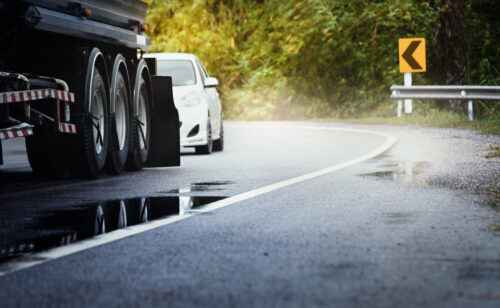
In most cases, when a rear-end accident occurs the rear vehicle is normally held responsible for the collision as they are expected to maintain a sufficient distance from the vehicle in front of them. However, in other cases, the lead driver may be partially or fully at fault depending on the circumstances of the collision. Victims of rear-end collisions can sustain serious injuries regardless of the speed at which the collision occurs. If you have been injured in a rear-end accident through no fault of your own, contact a proficient Chesterfield County Car Accident Lawyer who can help you understand your legal options.
What is a rear-end collision?
In the U.S. one of the most frequent types of collision is rear-end accidents. Research shows roughly 29% of all auto accidents are rear-end collisions. A rear-end accident occurs when a driver strikes the vehicle directly in front of them from behind. There are various reasons why rear-end collisions occur, and they can range from minor fender benders to severe and life-threatening accidents. Some of the most common causes of rear-end accidents are:
- Distracted driving
- Reckless driving
- Aggressive driving
- Fatigued driving
- Inclement weather conditions
- Following too closely
- Speeding
- Improper lane changes
Rear-end collisions often occur at red lights and when in congested traffic. This is because drivers become impatient causing them to drive more aggressively and neglect to leave adequate space between themselves and the vehicle in front of them.
Who is liable for this type of car accident?
As mentioned above, the driver tailing is usually presumed to be at fault for causing a rear-end collision as they crash into the back of the vehicle in front of them. However, in some cases, the leading driver may bear fault for the crash. This is the case in the following circumstances:
- The lead driver has broken or malfunctioning brakes or taillights.
- The lead driver suddenly shifts into reverse (backup accident).
- The lead driver steps on their brakes without valid reasoning (brake checking).
- The lead driver has a mechanical issue and does not move to the side of the road.
While it’s expected that the tailing driver will bear some responsibility for the accident, the lead driver may also have contributed to the cause of the collision.
What happens when the tailing and lead driver share fault?
South Carolina is a comparative negligence state. Therefore, if the tailing and lead driver are both at fault for an accident, under a modified comparative negligence system, the plaintiff can recover compensation for their damages. This is as long as they are less than 51% at fault for the cause of the collision. If they are more than 51% at fault for the cause of the collision, they will be barred from recovering compensation for their losses stemming from the accident.
If you have been injured in a rear-end accident, contact a determined Chesterfield County car accident lawyer at the Cockrell Law Firm, P.C. Our firm is committed to helping our clients attain the fair compensation they need to get back on their feet again. Allow our firm to represent your interests today.